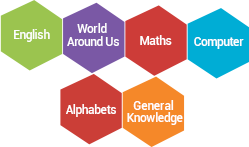The two basic parts of the plants are the shoot system and the root system.
Root System
The part of the plant that is seen below the soil is the root. The function of the root system is to absorb nutrients and moisture from the soil. Anchor the plant in the soil and to support the stem. In some plants such as carrot store food. In some the roots are used for propagation.The root system has the following parts:
-
- Primary Root
- Lateral Root
- Root hairs
- Root tip
- Root cap
Like stem the root structure also have xylem, phloem and cambian. In additi
on they have root cap which produced new cells continuously. The root cap helps to protect the roots as they bury through the soil to grow. Root caps have roots hairs which help to absorb moisture and minerals from the soil. Root hairs are also called as small roots.
There are two types of root system and they are called Fibrous root and Lap root. Fibrous grass root systems have easy transplanting. The plants with fibrous root system are shorter, smaller and are more compact. Lap root systems have longer roots but the roots are very small in number. Example for lap root system is carrot.
Shoot System:
The part of the plant above the ground is called the shoot system.
It is composed of stems in which the leaves, flowers and buds are attached. Plants get their structure through stems and the stems carries all the nutrients activities of the plant through xylem and phloem.
Leaves regulate plants temperature and produce the energy needed for the plant and they are attached to the stem by a leafstalk call the petiole. The part where the leaves attach to the stem is called a node. And the space between two nodes or the space between each leaf is called an internode. Terminal bud or apical bud is present at the top of the plant.
Basic parts of the shoot systems are explained below:
Stem:
Stems have two main functions. The first one is to transport the water and minerals from the roots upwards to all other parts of the plant. The second one is to transport the food from the leaves downward to the roots. The economic importance of the stems is for food and building materials. Stems provide support to the leaves and reproductive structures.
They are used to store foods. Stems which are green in colour produce foods just like the leaves. The stem has phloem, xylem, and cambium internally. Phloem the bark of the stem is used to carry the food downwards. Xylem the wood of the stem is used to carry water and minerals upwards. Cambium is used to separate the phloem and xylem and is also used to produce new cells.
Leaves:
Leaves are called the food factory of the plants. Leaves produce foods and store them for later use. The shape and size of the leaves differ from one species of plant to another. The leaves help to identify the type of plant species it belongs.
External leaf structure
The stalk of the leaf is called the Petiole. The leaf blade contains veins and helps to form the structural framework of the leaf. It has a large vein called midrib from which all other veins are extended. Edges of the leaves are called as Margins and they help in the plant identification.
Internal leaf structure
The skin of the leaf is called as Epidermis and it contains single layer of cells. Epidermis helps the leaf to protect them from losing lot of moisture. The epidermis also protects the small pores present on the underside of the leaf.
Leaves have stomata on their underside. Stomata are nothing but small pores that help the plants to breathe. These stomata take in carbon dioxide and give out oxygen for the living.
Leaf Functions
The colouring matter of the plant is called as Chloroplasts. Chloroplasts contain chlorophyll which give colour to the leaves. Chloroplasts are found inside the food cells.
Leaves manufacture food for the plants. The process of preparing food with the help of sunlight and chlorophyll is called as Photosynthesis. Photosynthesis is the process by which carbon dioxide and water in the presence of sunlight and chlorophyll is converted into sugar and oxygen.
Flowers are the reproductive parts of the plant. Flowers differ in their size, shape and colours. When the flowers are matured they develop into a fruit. The male part of the flower is called as stamen. And the female part is called as pistil. The stamen is made up of anther and filament and the pistil is made up of stigma and ovary. Pollination is the process by which the fertilisation of flowers takes place and the ovule in the flower develops into a fruit.
Vegetables:
Vegetables are the edible part of the plants that can either be seeds, roots, stems, leaves, bulbs, tubers, non-sweet fruits etc. In short we can say that a fruit could be a vegetable but a vegetable cannot be a fruit.
Most of the kids like to eat the fruits which are sweet but they hesitate to eat the vegetables since they are bitter except carrot and sweet potato. To see the complete list of the different types of vegetables visit the page “Types of Vegetables”.
Also see the Natural benefits of vegetables…
Fruit
Fruits are the final product of the plants. The fruits contain seeds inside them. Depending on the fruit the seeds inside them vary in number. Some fruits have one seed, some have two and some fruits can have many seeds which are small. Fruits can be fleshy or hard depending on the plant species.
DOWNLOAD FREE PRINTABLE WORKSHEETS!






